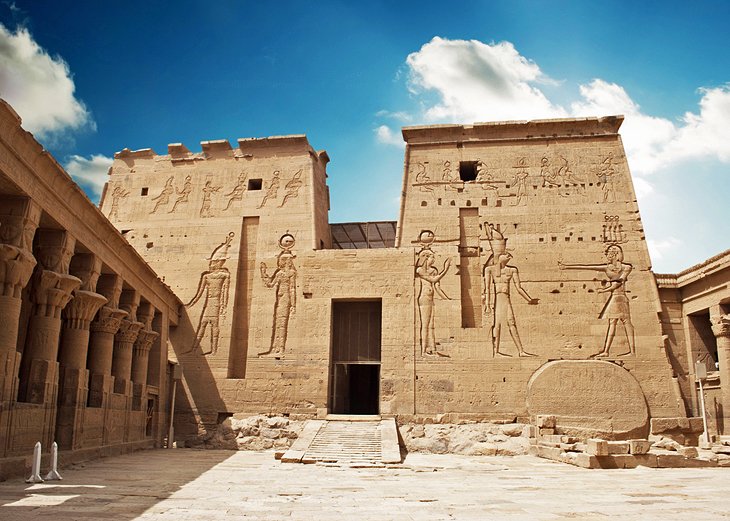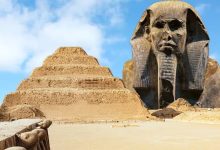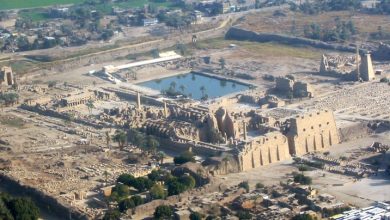The monuments of Philae encompass a remarkable collection of buildings dating back to the Ptolemaic era
(332–30 BC). Among the most notable is the temple initiated
by Ptolemy II Philadelphus (285–246 BC), dedicated to the goddess Isis, mother of Horus, the divine protector of kingship. Within the mammisi, or birth house, scenes depict Isis nursing the infant Horus amidst the marshes, symbolizing his divine birth.
The Temple of Isis remained in active use longer than most ancient Egyptian sanctuaries, functioning well into the Byzantine period. It was only under Emperor Justinian I (527–565 AD) that pagan temples were ordered closed. Around this time, the priest Esmet-Akhom inscribed the last known hieroglyphic text in 394 AD. The temple was later converted into a church, and many of its original carvings were erased.
Adjacent to the Temple of Isis stands another shrine dedicated to Hathor, built by Ptolemy VI Philometor (180–145 BC) and later completed under the Roman Emperor Augustus (30 BC–14 AD). Still standing as well is Trajan’s Kiosk (98–117 AD), once roofed but now admired for its elegant columns, which captivated early travelers who recorded and illustrated its beauty. Isis was the principal deity of the island, and reliefs portray emperors offering gifts to her, her consort Osiris, and their son Horus.
When the construction of the Aswan High Dam threatened to submerge Philae beneath the Nile, all of these monuments were carefully relocated during UNESCO’s Nubia Campaign in the 1960s to nearby Agilkia Island, ensuring their preservation for future generations.




